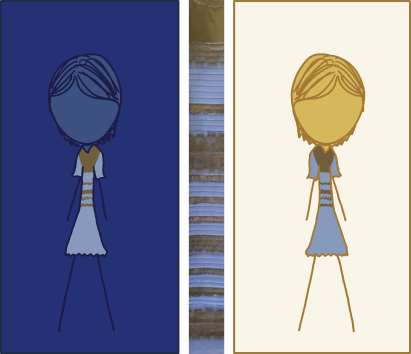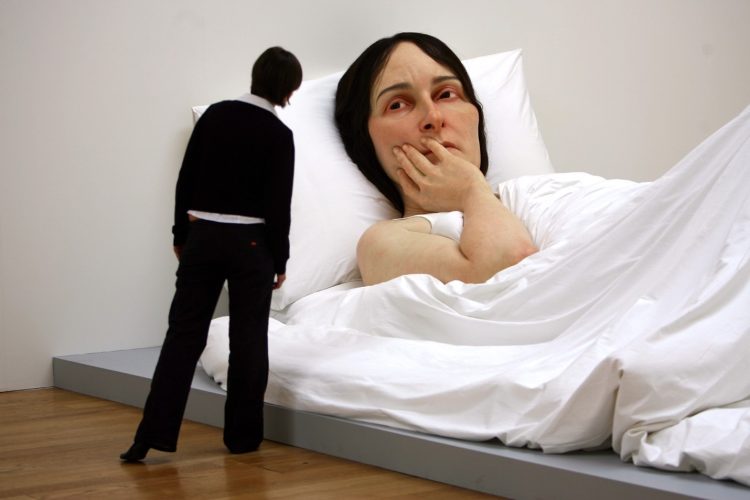The following is the first in a series of three essays exploring how the concept of a holographic universe might apply to how we understand health and disease.
Everything Is Relativity
Whether I am standing with my feet at the edge of the ocean or reclining in the cabin of a 747, it feels to me that I am motionless. I perceive speed only vis-à-vis a frame of reference: if the train beside me pulls ahead, I seem to decelerate. If the train beside me falls behind, I seem to accelerate. But am I, really? Speed is something I cannot perceive in an absolute sense—only relative to something else. Why should the speed of light be any different?
Let’s try to shift our thinking for a few minutes and see the world with fresh eyes. We claim the universe is accelerating and expanding. But who—where—is the inertial observer who can make this claim? I recently read a wonderful piece by Jim Pivarski at Fermilab: “Is the universe getting bigger or am I getting smaller?” In it, he writes:
It is a well-established fact that the universe is expanding. It grows without center, like an inflating raisin cake, but an infinite raisin cake filling all of space in all directions. The raisins are the galaxies. A problem I’ve had with this explanation is that if everything were to double in size — galaxies, houses, you and me, rulers — then we’d never notice. I might be a towering giant, but if the room is equally huge, I wouldn’t know. We can only see relative differences in sizes.
I wonder if the fact that we can only perceive relative differences in size and speed should inform how we conceptualize light. What if we treat the speed of light not as the unattainable “speed limit” of the universe, but as the a priori baseline against which speed should be measured. The degree to which we are accelerating and expanding is—precisely—the degree to which we are behind the speed of light. The degree to which we are decelerating and contracting is the degree to which we have surpassed the speed of light.
[O]ur observable universe is at the threshold of expanding faster than the speed of light. ―physicist Lawrence M. Krauss
Sound crazy? Perhaps. But it gets progressively less crazy when we recall that this may be a holographic universe, as modeled by a number of physicists, including Stephen Hawking. In a holographic universe, the images our brains create are not fundamental. Reality is not necessarily what it appears to be.
Our brain mathematically constructs objective reality by interpreting frequencies that are ultimately from another dimension, a deeper order of existence that is beyond both space and time. —David Bohm
In layman’s terms, the brain takes two-dimensional sensory information and renders the rest to paint the pictures we call reality. The holographic principle was first proposed by Nobel laureate Gerard ‘t Hooft in the 1990s. In 2017, a UK, Canadian, and Italian study provided substantial evidence that the universe is, indeed, holographic. What does that mean?
We treat this as a non-holographic universe, meaning we treat reality as something that exists objectively, rather than as something that is being rendered. But the act of rendering could create a layer (or layers) of context that we do not perceive. For instance, when we see an object, e.g. a rock on a hill, we treat it as one thing—matter that is at rest. But could it be two things?
Could it be light that has acquired density, and acquired [potential] speed? If light’s density and speed are holding each other in balance, it would appear motionless. But like a rock pulled back in a sling, there is something we do not see: dark energy. Similarly, at the other end of its journey, the apogee, there will be something else we do not see: dark matter. In other words, when density is at its maximum, speed exists as potential. When speed is at its maximum, density exists as potential.

We assume that what we see is frank light (light as light), and matter and energy are things unto themselves. I believe they are more akin to light’s derivatives. Think about it for a moment. Perhaps, in order to be seen as itself, light requires the proper background. When the background is too cold, light has to be too hot. When the background is too hot, light has to be too cold.

The planets of the solar system can be seen as representing various widths of light. To our left, we see the rocky planets—cold light against a hot background. To our right, we see the gas giants—hot light against a cold background. This model, which owes a great debt to cognitive scientists such as Donald Hoffman, Beau Lotto, and Anil Seth—is not about object as object; it’s about the images our brains are creating, the expression of light’s limits. It’s about E=mc^2.
We Perceive Only in the Context of Something Else
What if we do see not what is but see the “shadow”—the differential—between what is, and what we are? It’s as if we are seeing along a length of pipe, but we cannot see the pipe through which we see. We can perceive circles whose width is narrower—these will appear to be expanding (viz. the expanding universe). And we can perceive circles whose width is wider—these will appear to be contracting (viz. the Lorentz contraction). But we cannot see the pipe itself. The pipe itself—light as light—stretches from black hole to black hole to black hole.
Perhaps that is what we were witnessing in the fourth state of matter experiment. When squeezed past a critical boundary, we see light shine out. When stretched past a critical boundary, we see light shine in. When neither squeezed nor stretched, light simply “shines forward”—but when light simply “shines forward,” can we see it? Perhaps not if we are shining forward, too. We have observed light behave in mystifyingly inconsistent ways in the double-slit experiment.

Is a train most itself when sitting in the station? Why should we treat its baseline speed as zero? If we change the baseline to its cruising speed, something interesting happens: the inertial position is revealed to be one of hidden restraint. When below the baseline, we are too cold, so we need to speed up. While accelerating, we are “too hot because we’re too cold.” When above the baseline, we are too hot, so we need to slow down. While decelerating, we are “too cold because we’re too hot.” A paradox is created like the paradox of mirrors, where what we see is a reverse image—a shadow—of the truth.
Expansion and Contraction
As I write this, the United States is experiencing extreme weather. Record-breaking cold. Epic snow and rain. Recently, a 7.8 magnitude earthquake struck Turkey and Syria. I wonder if we have entered a period of contraction.
Surely, if the earth—the universe—were contracting, we would perceive it as such, wouldn’t we?
Not necessarily. Not if what we perceive exists against a backdrop—as would be the case if reality were holographic. Do we know for sure that what we see is “true” green? What if it’s blue exploding into yellow? Or yellow collapsing into blue? Or, to use Jim Pivarski’s analogy—when we are dehydrated raisins, so to speak, we see a universe that expands. When we are supersaturated raisins, we see a universe that contracts.
The Twin Variables of Illness
I am interested in looking at illness as a “twin variable” issue where—like a universe contracting against a backdrop that is expanding—there are two things going on at once, but because the net effect is still “green,” we don’t see that behind the scenes, the values for blue and yellow are both off. To borrow physicist David Bohm’s phrase, when it comes to human health, I am interested in hidden variables.
The central idea here is simple: we do not exist in a context of nothingness, a vacuum. We exist in the context of light. There is a “fabric” to reality, a baseline. If I condense below the baseline too much, I have to accelerate and expand too much (Parkinson’s?). If I expand beyond the baseline too much, I have to decelerate and contract too much (ALS?). If this is a holographic universe rather than a “flat” universe, there is context to what we perceive. The number we see could be, secretly, a composite number—we see a rock, but I am a rock inside a sling. When I am behind zero, I have too much dark energy. When I am above zero, I have too much dark matter. We need to look beyond the material symptoms of illness, and consider the forces that may be causing these symptoms to arise—forces resulting from a departure from the speed of light.
The next two essays will explore these concepts more fully.
We Need Your Help
More people than ever are reading Hormones Matter, a testament to the need for independent voices in health and medicine. We are not funded and accept limited advertising. Unlike many health sites, we don’t force you to purchase a subscription. We believe health information should be open to all. If you read Hormones Matter, like it, please help support it. Contribute now.
Yes, I would like to support Hormones Matter.
Feature image by Gerd Altmann from Pixabay.
Allegory image: 4edges, CC BY-SA 4.0, via Wikimedia Commons.
















The original article I link to by Jim Pivarski has been taken down, however the same ideas are expressed here in Symmetry: Dimensions of Particle Physics: https://www.symmetrymagazine.org/article/is-the-universe-getting-bigger-or-am-i-getting-smaller?language_content_entity=und
Thank you Alethea – this is an intriguing essay and a fascinating subject. Indeed, reality is not necessarily what it appears to be. As you mention, the double-slit experiment, performed classically or in numerous other variations, is an example of our mind bending reality.
Interesting piece, Alethea! Look forward to the next two essays.